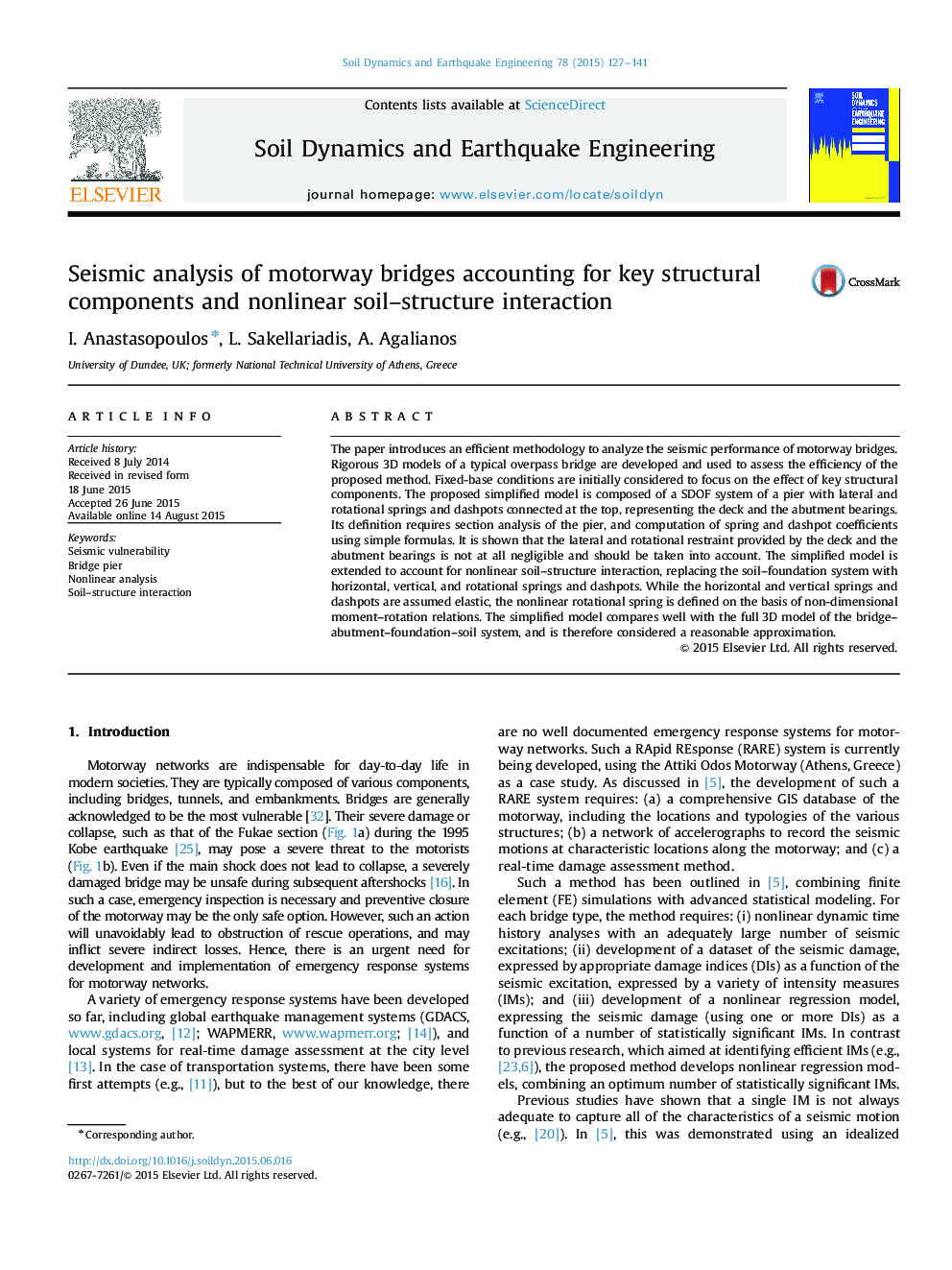| Article ID | Journal | Published Year | Pages | File Type |
|---|---|---|---|---|
| 304042 | Soil Dynamics and Earthquake Engineering | 2015 | 15 Pages |
•A simplified method to analyze the seismic response of bridges is developed.•The deck and abutment bearings are replaced by lateral and rotational springs.•The model is extended to account for nonlinear soil–structure interaction.•Simple formulas are derived to compute spring and dashpot coefficients.•The simplified model compares well with a detailed 3D model of the bridge.
The paper introduces an efficient methodology to analyze the seismic performance of motorway bridges. Rigorous 3D models of a typical overpass bridge are developed and used to assess the efficiency of the proposed method. Fixed-base conditions are initially considered to focus on the effect of key structural components. The proposed simplified model is composed of a SDOF system of a pier with lateral and rotational springs and dashpots connected at the top, representing the deck and the abutment bearings. Its definition requires section analysis of the pier, and computation of spring and dashpot coefficients using simple formulas. It is shown that the lateral and rotational restraint provided by the deck and the abutment bearings is not at all negligible and should be taken into account. The simplified model is extended to account for nonlinear soil–structure interaction, replacing the soil–foundation system with horizontal, vertical, and rotational springs and dashpots. While the horizontal and vertical springs and dashpots are assumed elastic, the nonlinear rotational spring is defined on the basis of non-dimensional moment–rotation relations. The simplified model compares well with the full 3D model of the bridge–abutment–foundation–soil system, and is therefore considered a reasonable approximation.
